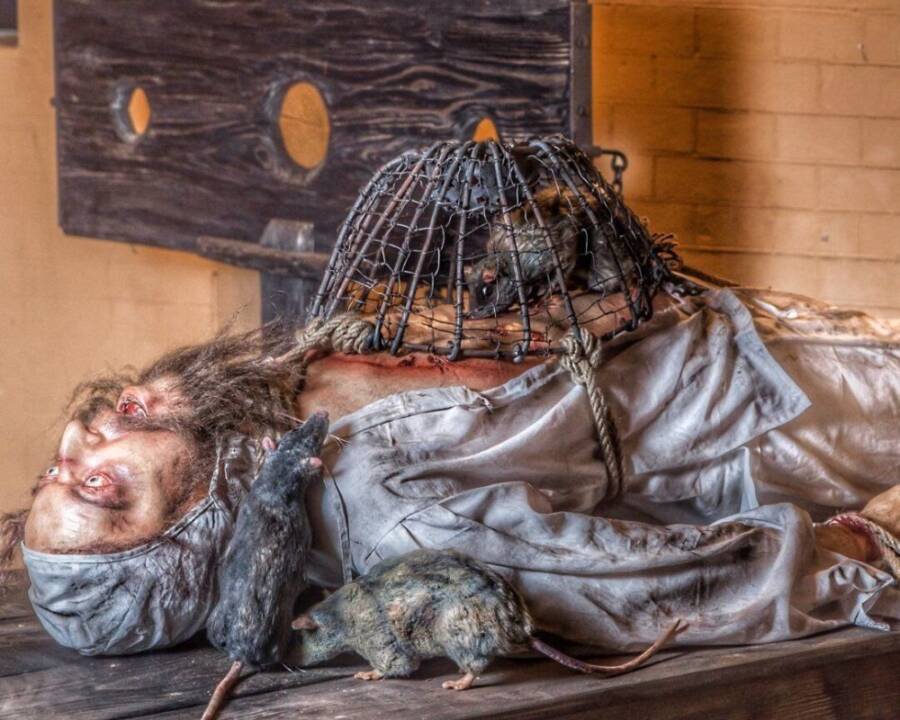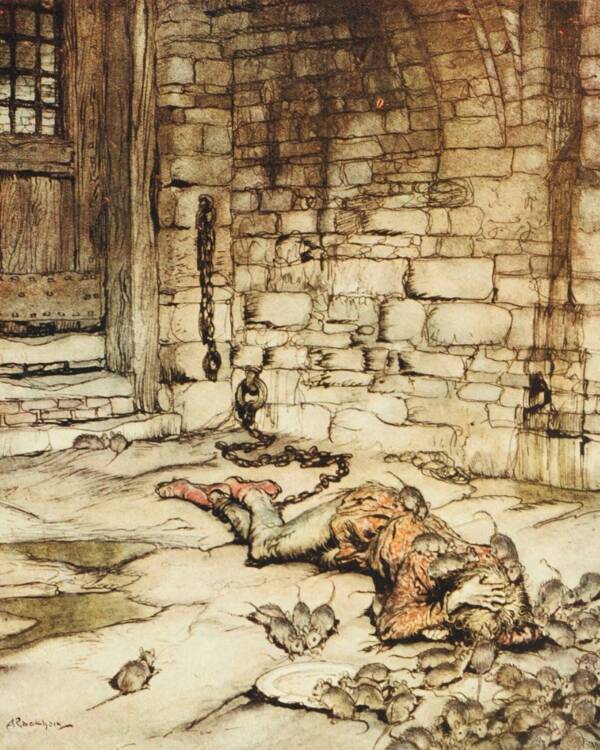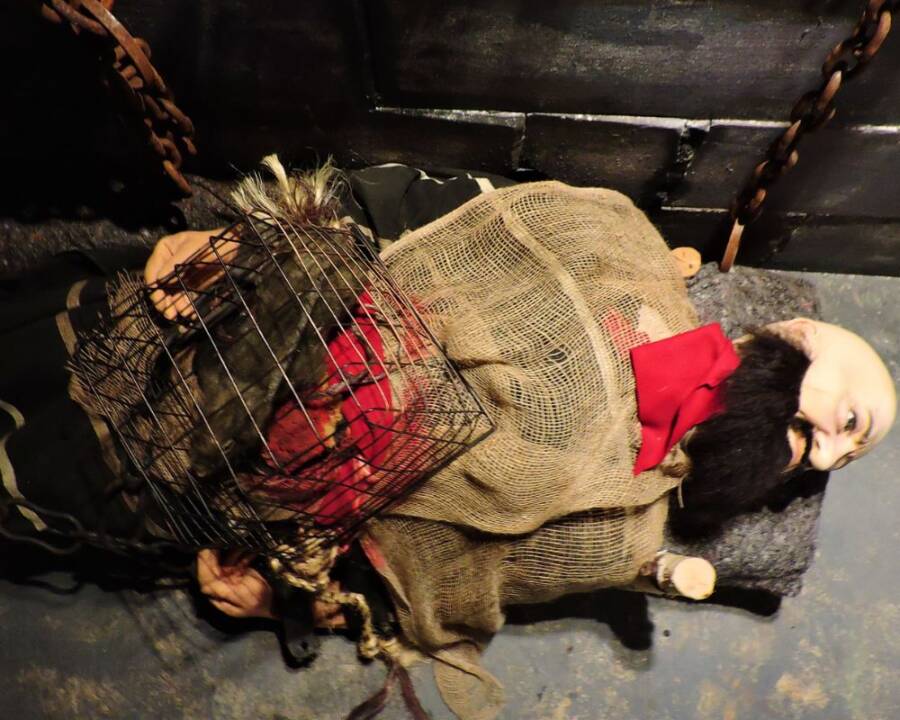Rats have been used to torture prisoners and political enemies in many ways over the centuries — but some methods are more horrific than others.
Humans have a long history of developing inventive ways to hurt each other. There’s seemingly no end to the horrifying torture devices that people have conceived. But one of the most terrifying methods of torture ever created doesn’t require a man-made device at all — it just requires a rat.

Facebook/Medieval Torture Museum (Los Angeles)In some methods of rat torture, a metal cage would be placed on a prisoner’s abdomen and heated with coals from the top, causing the rats inside to start digging into the victim’s flesh to escape.
Many people naturally feel a sense of fear and revulsion toward rats. The animals will chew through nearly anything, including human flesh, and that made them the perfect tools for torture. Especially if the torturer knew how to use them.
Various methods of rat torture have been practiced around the world for centuries. From ancient Rome and medieval London to 20th-century South America, this is the grisly history of one of the world’s most chilling torture methods.
The Earliest Forms Of Rat Torture
It’s unclear exactly where and when rat torture first originated, but it was used at least as far back as 60 C.E. in the Roman Empire. Then, according to the Torture Museum, Emperor Nero used the rodents as tools of “justice” against his enemies.
Prisoners in India also reportedly underwent torture involving rats. Those awaiting punishment were placed in loose pants that were tied tightly around the ankles. Rats were then poured into the pants, where they scratched and bit the prisoners’ legs and groins while trying to escape from the fabric.
And in medieval London, according to The Pictorial History of England, the notorious Tower of London even had a special dungeon dedicated to rat torture. It was located beneath the water line of the River Thames, and prisoners would be tossed into the pitch-black space during low tide.

Arthur Rackham/Wikimedia CommonsA 1919 illustration of a prisoner covered in rats.
As the tide came in and the water rose, rats would float in along with it. The prisoners wouldn’t be able to see the creatures, but they would hear their feet scurrying about and feel them crawling across their bodies as they lay helplessly on the cold floor. Catholic partisans even claimed that “the flesh [was] torn from the arms and legs of prisoners during sleep by the well-known voracity of these animals.”
These early forms of rat torture were certainly simple, and the fear of the method was likely more intense than the actual pain for many victims. However, as time went on, the techniques became more and more depraved — and soon rat torture was one of the most gruesome ways to die.
How The Dutch Used Caged Rats To Torment Their Enemies
One of the most fiendish forms of rat torture emerged during the Dutch Revolt in the 16th and 17th centuries. The method involved trapping rats in a bottomless cage atop a victim’s abdomen. Burning coals were then placed on a small tray atop the cage, heating the metal from above.
Desperate to escape the heat, the rats began to burrow through the only soft surface they could find: the victim’s flesh. With sharp claws and teeth, the rats quickly gnawed their way into the victim’s bowels, causing excruciating pain and terror.

Flickr/Dimitris KamarasA model of a prisoner undergoing rat torture at the Torture Museum in Bruges, Belgium.
Per Short History, one of the first documented uses of this diabolical technique occurred in 16th-century Europe during the Dutch Revolt, with Dutch leader Diederik Sonoy famously implementing the torture method against captured prisoners.
The technique particularly came in handy when Dutch leaders were trying to extract information from their Spanish enemies. As soon as the caged rats were placed on prisoners’ abdomens, the terrified men would often give up anything they knew even before the coals were added on top.
Other unhinged leaders around the world soon saw how effective rat torture was for purposes of interrogation — and punishment — and started implementing their own versions. And although the techniques seem completely barbaric, they were used well into the 20th century in some South American countries.
The Surprising Use Of Rat Torture In 20th-Century South America
According to The Harvard Crimson, Chilean dictator Augusto Pinochet reportedly employed rat torture against his political opponents during the 1970s. Female prisoners reported that Pinochet’s military placed the rodents inside their vaginas.
One woman recalled, “I was raped and sexually assaulted with trained dogs and live rats.”

Wikimedia CommonsSouth American dictators like Chile’s Augusto Pinochet reportedly used rat torture well into the 1970s.
Around the same time as Pinochet’s reign of terror in Chile, the military junta in control of Argentina during the country’s Dirty War devised a devilish innovation of the process. Instead of placing the rats against the flesh, soldiers used a telescopic tube to guide the rats into a prisoner’s body through the rectum or vagina.
Ultimately, there are few specific documented cases of rat torture. It may be that the idea of coaxing a rat to eat its way into someone’s stomach was so horrible that even the most hardened sadists were reluctant to employ it.
But from what has been recorded, it’s clear that rat torture reigns as one of the most macabre interrogation techniques in history.
After learning about the gruesome rat torture method, discover the most painful torture devices of the Middle Ages. Then, learn about rat kings, giant super-rats of your nightmares.






